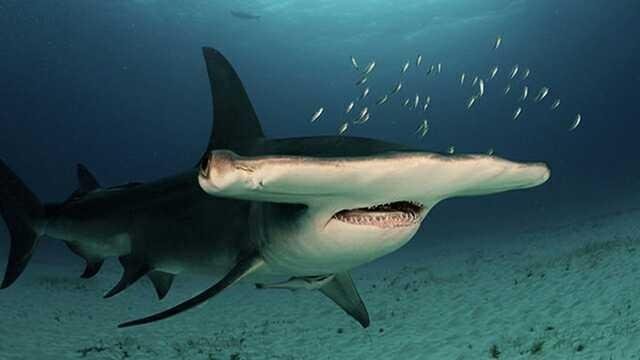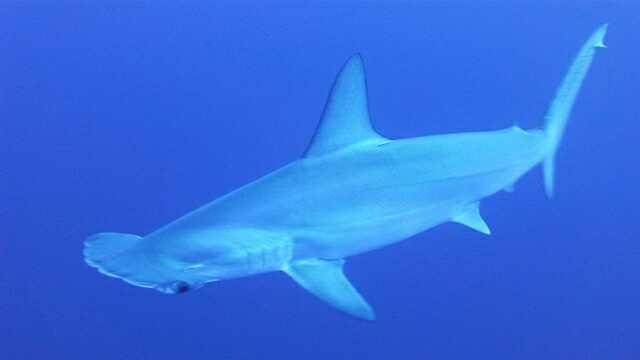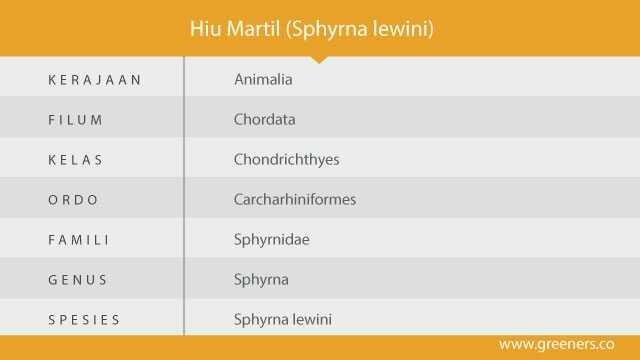
This one fish has a unique look, its head like a hammer or hammer. During his life he traveled around in tropical marine waters. This fish is known as the Hamlet Head Shark or the Martil Shark.
Before discussing the hammer head shark species, a glimpse of the shark in general. Sharks are fish that have a cartilage framework of the Elasmobranchii subclass. The Elasmobranchii group is made up of sharks and rays, has a high degree of diversity and can be found in a variety of environmental conditions, ranging from freshwater to deepest marine trenches and from cold climates of the ocean to warm tropical regions (Compagno, 2001).
Hammerhead shark (Spyrna lewini) or Scalloped Hammerhead is a shark that lives around the tropical and warm ocean waters, from the surface and intertidal to a depth of 275 m (reported bpsplpadang.kkp.go.id page). Hammerhead has many naming areas, among others shark caping (Java), capil shark (Bali), shark bingkoh (Lombok), shark horn (Sibolga and Aceh).
The hammerhead shark belonging to the Sphyrnidae family is a type of shark often caught in Indonesian waters (White et al., 2008), especially in the Indian Ocean region south of Java and Nusa Tenggara. Hammerhead sharks were originally a by-catch on tuna fisheries but in artisanal fisheries in some areas were sometimes targeted for catch (Drew et al., 2015; IOTC, 2014; Fahmi & Dharmadi, 2013).
This fish is an aggressive predator that eats fish, stingrays, squid, and crustaceans. But they are quite shy and not considered harmful to humans. Nine species of hammerhead sharks have a length of between 2 to 6 meters (6.5 to 20 feet), and all species have head projection resembling flattened hammer when viewed from one side, eyes on the head.

The hammerhead has a small mouth and seems to do a lot of bottom-hunting. They like to form hordes during the day, sometimes in groups of over 100. In the afternoon, like other sharks, they become solo hunters.
The hammerhead has two fins on its back. The first dorsal fin is high, slightly tapered and for short second dorsal fin, with long back ends and slightly concave edges. The tail fin is shaped like the letter "V" and has a pair of pectoral fins. Generally gray on the back and white on the abdomen.
This strange shark's head shape can be analogous to an antenna's antenna because it helps the animal to twist its body properly. Hammerhead sharks have pores of electrolocation sensors called ampullae of Lorenzini. By spreading receptors in different areas, hammerhead sharks can search for prey more effectively. In addition, it also has the ability to detect electrical signals of half a billion volts. The hammer head shape also provides the advantage of a broader olfactory area, increasing the potential for finding particles in water at least 10 times compared to other 'classical' sharks.
Again, economic factors are the reason for the decline of this species population. Shark fishing in Indonesia has increased in line with the high demand for shark fins in the international market. In 1987 recorded shark fishery production in Indonesia amounted to 36.884 tons and in 2000 increased to 68.366 tons. That number is almost twice that of 1987 (Darmadi et al., 2002). The FAO data shows that Indonesia is the top-ranked country that catches most sharks and rays annually.
Based on Koran Tempo's review, March 1, 2018, shark and ray populations are now approaching the threat of extinction due to overfishing, habitat destruction and climate change. The explanation was delivered by Noviar Andayani, County Director of the Wildlife Society-Indonesia Program (WCS-IP). He explained that the biggest threat facing sharks and rays came from overfishing.
The shark catch is not a target catch but a by-catch in tuna fisheries. Overfishing is driven by the high economic value of shark and ray products, such as, fins, gills, and oils, so many are vying to capture as much as possible. Even fishermen make sharks as their main catch.
Whereas hammerhead sharks include banned fish species exported based on Regulation of Minister of Marine and Fisheries Number: 59 / PERMEN-KP / 2014 and Number: 34 / PERMEN-KP / 2015.
In the Journal of Indonesian Fisheries Research (2016), the current data and information needs related to today's hammerhead sharks is very important considering its conservation status which according to IUCN Red List is endangered and according to the Convention on International Trade in Endangered Species (CITES) of Wild Fauna and Flora are included in Appendix II. Sharks are also very susceptible to over-fishing pressure because they show the K-strategy pattern of its long life cycle, slow growth and maturity of its genitals and low fecundity.
